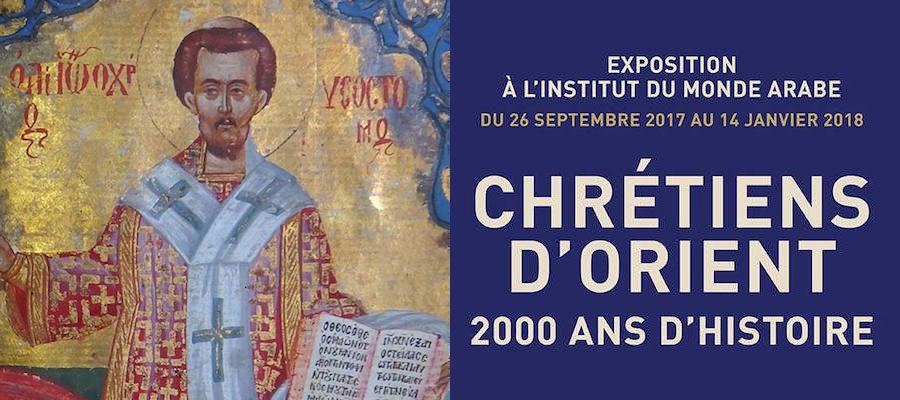Oriental Christians: 2,000 Years of History, L’Institut du monde arabe, Pairs, September 26, 2017–January 14, 2018
The exhibition ‘Oriental Christians: 2,000 Years of History’ sheds light on the history of a diverse community and the major role it has played in the Near East, in the political, cultural, social, and religious arenas. Visitors will be able to discover masterpieces of Christian heritage throughout the itinerary, some of which have never been presented in Europe before.
Christianity began in Jerusalem and rapidly spread throughout the Near East: it became established in Egypt and in the regions corresponding to present-day Lebanon, Syria, Jordan, and Iraq. Throughout history, the Christians have played a major role in the political, cultural, social, and religious development of this region of the world.
The exhibition sheds light on the unique role of Christianity through pivotal periods: the adoption of Christianity as a State religion, the establishment of the Churches after the councils, the Muslim conquest, the development of the Catholic and Protestant missions, the Christians’ contribution to the nahda (the Arab renaissance), and the cultural and political renewal in the twentieth and twenty-first centuries. The exhibition also focuses on the contemporary vitality of the Christian communities in the Arab world, perturbed by recent events.
Throughout the itinerary, emphasis is place on the incredible diversity of Christianity, with its Coptic, Greek, Assyro-Chaldean, Syriac, Armenian, Maronite, Latin, and Protestant Churches: the exhibition addresses each facet of Oriental Christianity in its Orthodox and Catholic dimensions.
The itinerary is comprised of major heritage masterpieces, many of which have never been exhibited before in Europe. Some of them have been loaned for the event by the communities themselves. These extraordinary items will include the Rabbula Gospels, a famous illuminated Syriac manuscript dating from the sixth century, and the earliest known church frescoes—from the third century—from Dura-Europos in Syria.
Maps, models, documentaries, and diplomatic archives put these works in perspective. The aim is to provide the visitor with a complete overview of the role played by Oriental Christians in the cultural, political, and intellectual life of the Arab world.
